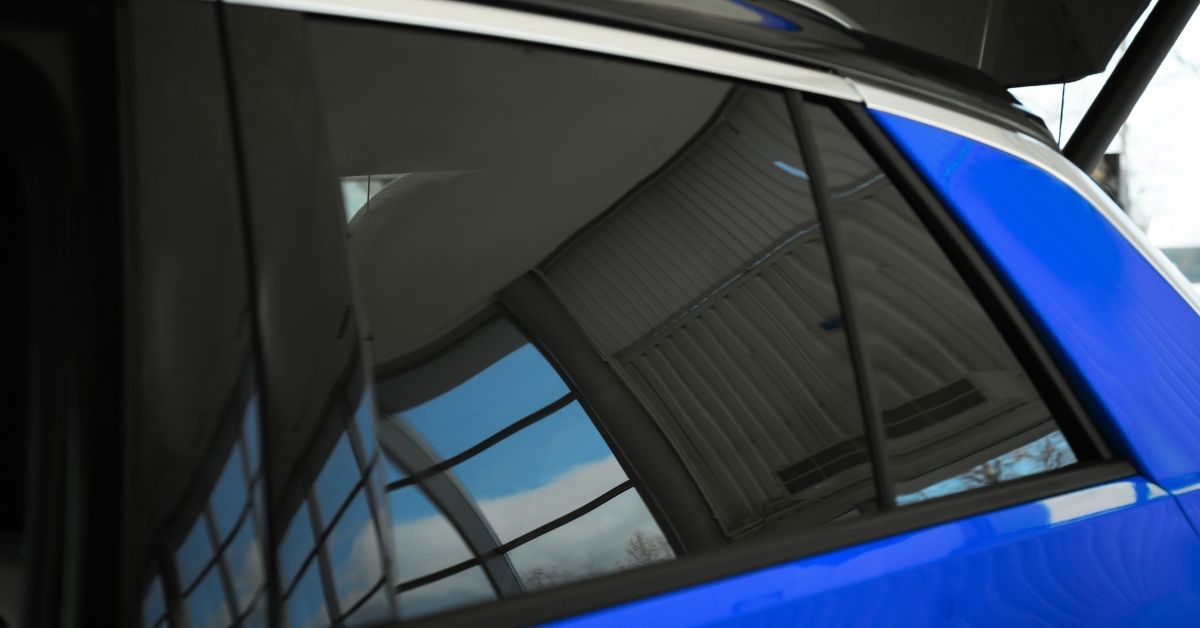Window tinting has come a long way from basic dyed films used primarily for aesthetics. Today, advancements in window tinting technology offer enhanced functionality, durability, and versatility. Whether you’re looking for improved UV protection, heat rejection, or smart features, the latest technologies in window tinting have something to offer for every vehicle owner.
In this article, we’ll explore the most recent innovations in window tinting technology and how they’re transforming the way we think about window tint.
Ceramic Window Tint: The Gold Standard
What Makes It Unique?
- Nano-Ceramic Particles: Infused with microscopic ceramic particles, this tint blocks heat and UV rays without compromising visibility.
- Non-Metallic: Unlike metallic tints, ceramic films don’t interfere with electronic signals like GPS, cell phones, or radio reception.
- Heat Rejection: It provides some of the best infrared heat rejection on the market, keeping car interiors cooler and reducing air conditioning usage.
- Durability: Resistant to fading, bubbling, and discoloration, ceramic tint maintains its performance over time.
Who Is It For?
Drivers seeking premium performance and maximum comfort, especially in hot climates, will benefit most from ceramic tint.
Smart Window Tint: Adaptive Technology
Features of Smart Tint
- Electrochromic Technology: This film uses an electrical current to change its transparency, allowing users to darken or lighten the tint with the push of a button.
- Customizable Tint Levels: Drivers can adjust the tint to block more light during bright days or make it clearer at night for better visibility.
- Energy Efficiency: Helps reduce interior heat and cooling costs by adjusting tint levels according to the intensity of sunlight.
Applications
Smart tint is gaining popularity in luxury vehicles and is increasingly being used in commercial buildings and homes.
Future Potential
With further advancements, smart tint could become a standard feature in vehicles, offering unparalleled convenience and adaptability.
Infrared-Blocking Window Tint
Key Features
- Heat Reduction: Blocks up to 90% of infrared heat, keeping interiors significantly cooler.
- UV Protection: Blocks 99% of harmful UV rays, protecting occupants and interiors.
- Clarity: Provides high visibility even with a darker appearance.
Why It Matters
This technology is particularly useful in regions with intense sunlight, offering a cooler and more comfortable driving experience without relying heavily on air conditioning.
Nanotechnology Films
How It Works
- Nano-particles are embedded into the film to target and block specific wavelengths of light, including UV and infrared rays.
- These films are incredibly thin, allowing for lighter tints that still deliver powerful protection and heat rejection.
Advantages
- High Performance: Offers heat rejection and UV protection comparable to darker films but with less tinting.
- Aesthetic Versatility: Ideal for drivers who want clear or lightly tinted windows without sacrificing functionality.
Pro Tip: Nanotechnology films are an excellent choice for those seeking discreet protection with minimal tint.
Carbon Window Tint: Environmentally Friendly Performance
What Sets It Apart?
- Non-Metallic: Unlike metallic tints, carbon films don’t interfere with signals or electronic devices.
- Heat and UV Protection: Blocks UV rays and reduces interior heat effectively.
- Fade-Resistant: The carbon particles in the film prevent fading over time, ensuring long-lasting performance.
- Eco-Friendly: Many carbon tints are produced with environmentally friendly materials.
Ideal For
Drivers who want a durable, high-performing tint that is both functional and sustainable.
Multi-Layered Films for Maximum Protection
Features
- UV and Infrared Blocking: Offers superior protection from both UV and infrared rays.
- Shatter Resistance: Strengthens windows, preventing shattering during accidents or attempted break-ins.
- Glare Reduction: Minimizes glare for safer driving.
- Aesthetic Appeal: Available in a variety of shades and finishes to suit different preferences.
Who Benefits?
Drivers looking for all-in-one performance, including safety, comfort, and style.
Advanced Installation Technology: Computer-Cut Tint
Computer-Cut Technology
- Precision Fit: Software is used to create templates based on your car’s exact make and model, ensuring the film is perfectly sized for each window.
- Time Efficiency: Reduces the time required for installation while improving accuracy.
- Damage Prevention: Eliminates the need for hand-cutting, which can scratch windows or damage seals.
Why It’s Important
Computer-cut tint ensures a flawless, factory-like finish that enhances both the appearance and functionality of your tint.
UV-Reflective Tints for Health and Safety
Key Benefits
- Skin Protection: Prevents skin damage and lowers the risk of skin cancer caused by prolonged UV exposure.
- Interior Preservation: Protects upholstery, dashboards, and other interior components from fading and cracking.
Why It’s Relevant
With increased awareness about the harmful effects of UV rays, this technology is becoming a must-have for health-conscious drivers.
Anti-Fog and Hydrophobic Coatings
Features
- Anti-Fog Coating: Prevents condensation buildup on windows, improving visibility in humid or cold conditions.
- Hydrophobic Coating: Repels water and dirt, keeping windows clean and clear in rainy weather.
Applications
These features are especially beneficial for regions with extreme weather conditions, ensuring safer driving regardless of the climate.
Conclusion: The Future of Window Tinting
The latest advancements in window tinting technology offer a combination of style, comfort, and performance that goes far beyond basic aesthetics. Whether it’s the superior heat rejection of ceramic tint, the adaptability of smart tints, or the precision of computer-cut technology, modern window tinting provides options for every need.
For the best results, invest in high-quality films and work with a professional installer to ensure your tint performs optimally and lasts for years. As technology continues to evolve, the possibilities for window tinting are endless—bringing new levels of convenience, protection, and innovation to drivers everywhere.

